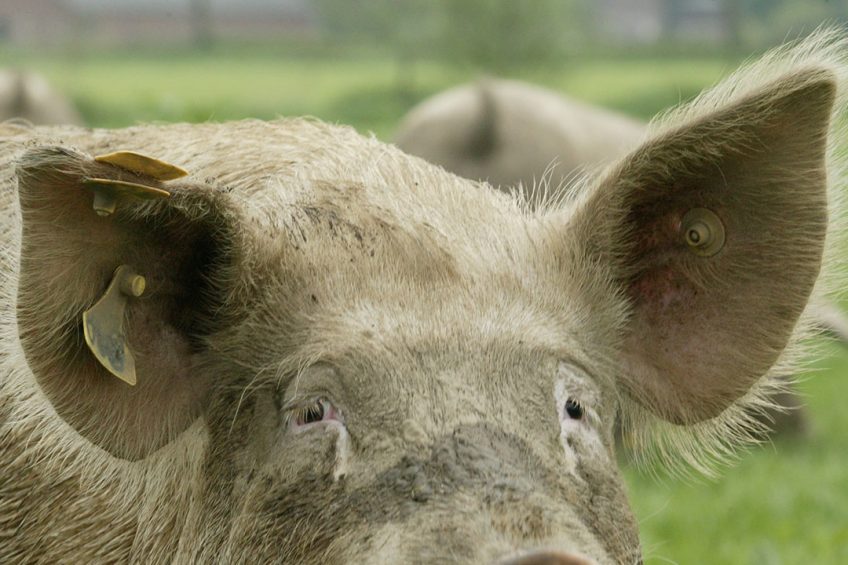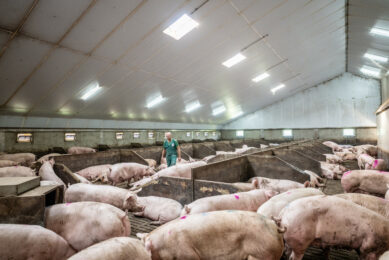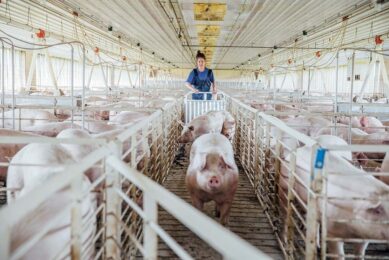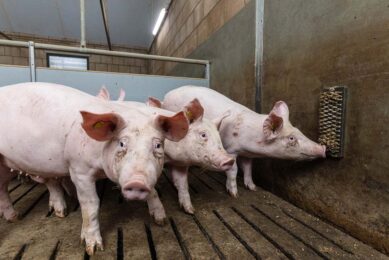Pigs in the media: the value of listening

In a world where social media are a major place for debate, issues quickly get polarised, pig producers know that all too well. One story in the media and unfriendly pros and cons quickly fill up any timeline, with any nuance disappearing. Sometimes it pays off to just ask that one question, writes Vincent ter Beek, editor for Pig Progress: ‘What happened?’
Furious they were – swine producers in the south of the Netherlands. The comments kept pouring in on my social media channels on June 10th. The local paper Eindhovens Dagblad had run a cover story about countryside residents who had gone to court to demand action. They felt the authorities needed to protect citizens against odours created by large livestock farms.
Not so much the story but the accompanying illustration had triggered the agricultural community’s anger – see the tweet below. The newspaper had edited a picture of a landscape by creating a layer with a greenish cloud. Obviously an art designer’s work – and the caption with the picture confirmed that.
Wie zit daar aan de knoppen bij @ED_Regio? Eerst een doodskop op de voorpagina in relatie tot veehouderij in nu deze schandalige gephotoshopte foto. Dit is puur haatzaaien tegen veehouders. Ik zou zeggen @POVarkenshouder: grijp in én stap naar de Raad voor de journalistiek. pic.twitter.com/6N2UPuT833
— Caroline van der Plas (@lientje1967) June 10, 2020
Angry reactions from livestock producers
On social media, various people from the livestock business reacted that this had been the last straw – they would now cancel their subscriptions. In short, the comments came down to this: the newspaper would have intentionally tried to make livestock producers look like criminals. This would be pure manipulation. This should not be allowed. After all, the greenish fog looked like a poisonous gas. This was bad, villainous journalism!
That is when I felt I should write a blog about it. Because I am a journalist as well.
I started my career at a local newspaper which is quite like the one above. Truth is, I loved every day of it and the versatility was enormous. There I learnt working against a daily deadline, and that no matter how well you try to plan, things can always go differently than planned. Just imagine a photographer missing a photo op or a major accident happening, and basically a page may have to be planned from scratch again.
Readers, however, will not notice any of this. They are oblivious to all the circumstances that might have led to that morning’s front page – just like what happened on the morning of that June 10.

Pig Progress experts talk
To read more Pig Progress expert opinions
Visualising odour of a pig farm
I took a good look at the cover too. I am not impressed with the illustration either. It looks like the newspaper tried to visualise the odour. The result, however, is nothing particularly spectacular – especially not for use on the front cover. And I must admit, green would not have been my choice.
Instead of thinking of villainous journalists, I thought of my former colleagues of years back. And I wondered what might have happened when the June 10 front cover was created.
Covering every angle of agriculture
About 3 days later, the Eindhovens Dagblad published an editorial article reflecting on this front cover. The author explained that journalism is about covering every angle of agriculture, not just the bad ones. About the green colour, the author said he had counted different opinions about it at the editorial desk. He added: “Colleagues chose the green colour on purpose because green is being associated with a bad smell and because it becomes immediately clear it is an edited picture. After all, real clouds are never green”.
Pretty much the practical type of answer that I expected – and pretty much in line with my experience how journalism works.
Writing about swine production all over the globe
Now journalism got me to what I am doing now – writing about swine production all over the globe. For almost 15 years I have been visiting pig farms in many countries. Now one could say that by now I should be able to judge which pig farmer is doing his job well and who is not.
But I don’t.
If there’s one thing that binds all swine producers, it is that they have a genuine passion for growing their animals, making conscious decisions they think are best for their farm. Each farmer in each country is dealing with his own set of rules, regulations, ideals, financial situation and climate.
I am not a swine farmer, and I realise that every day. Therefore, in order to do my job well, I need to listen carefully. Ask questions, pay attention and if I do not understand, ask more questions.
Asking questions yields answers
Asking questions is what I would like to ask from you, readers, as well, the next time you see a piece in the (local) media that appears to vilify the farming population. First calm down, then search for the reporter’s details and just ask questions… ‘What happened?’ Perhaps the situation isn’t as black and white as it seems to be. Perhaps the reporter is even happy to finally have come into contact with a professional in the swine business.
Not all journalists are bad. I am one of them.











